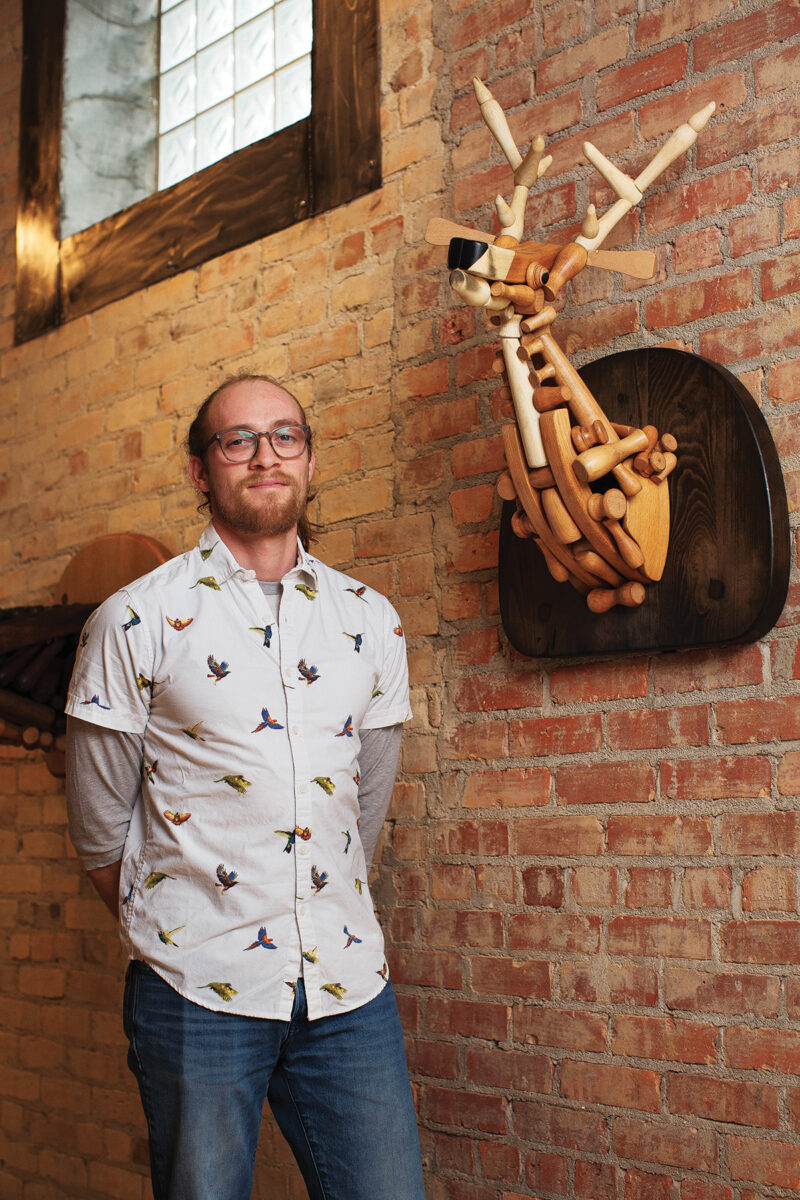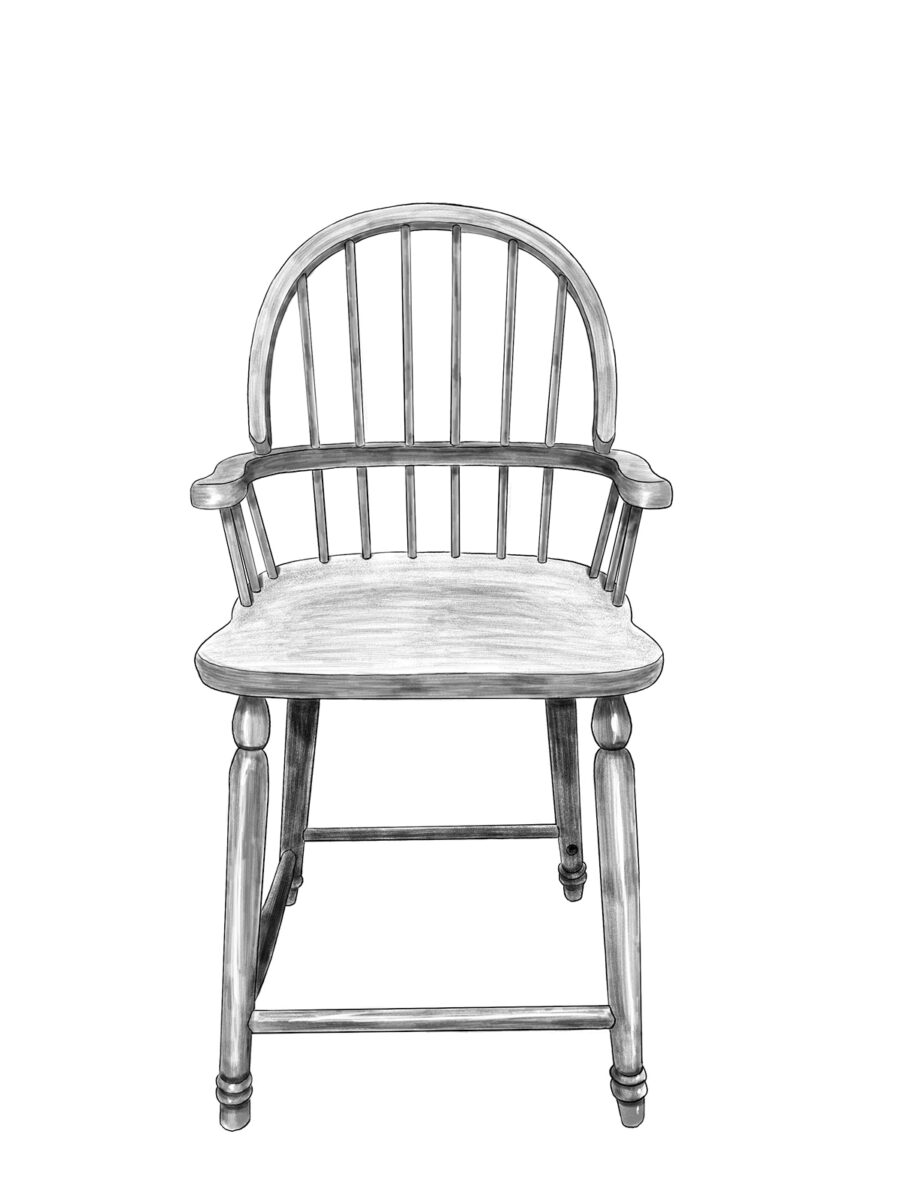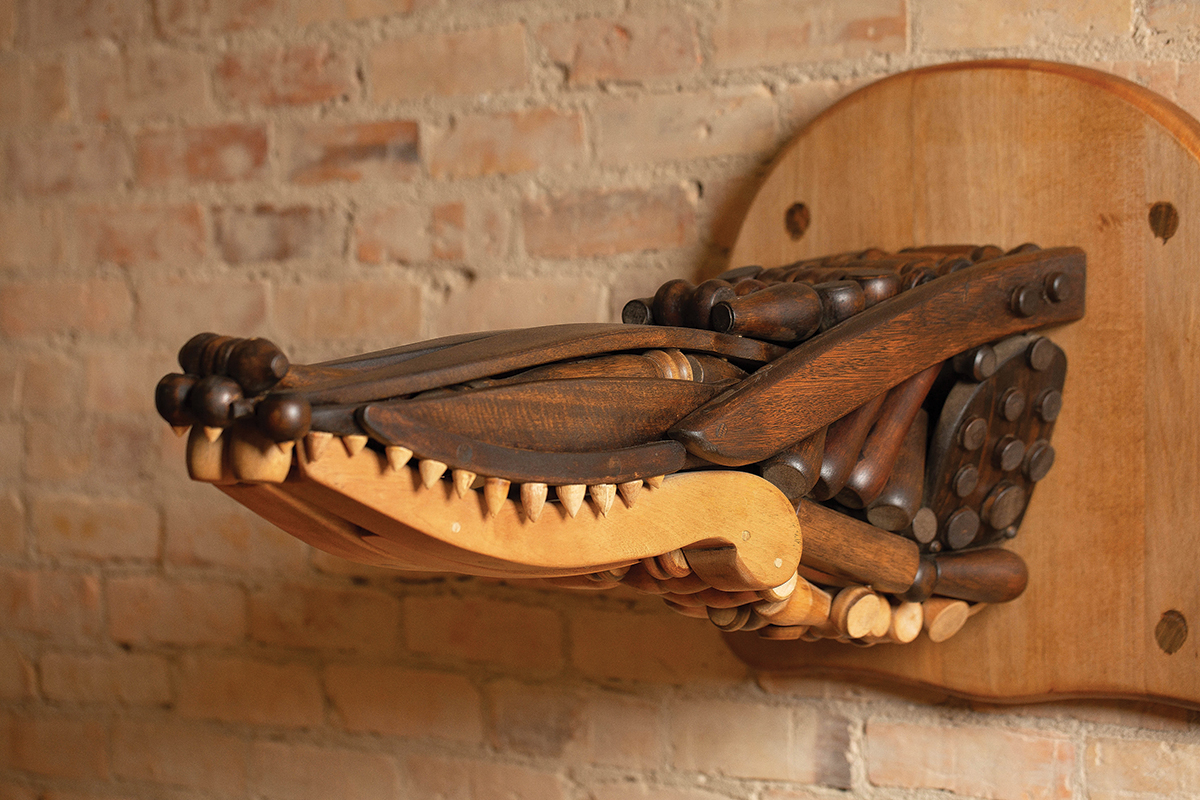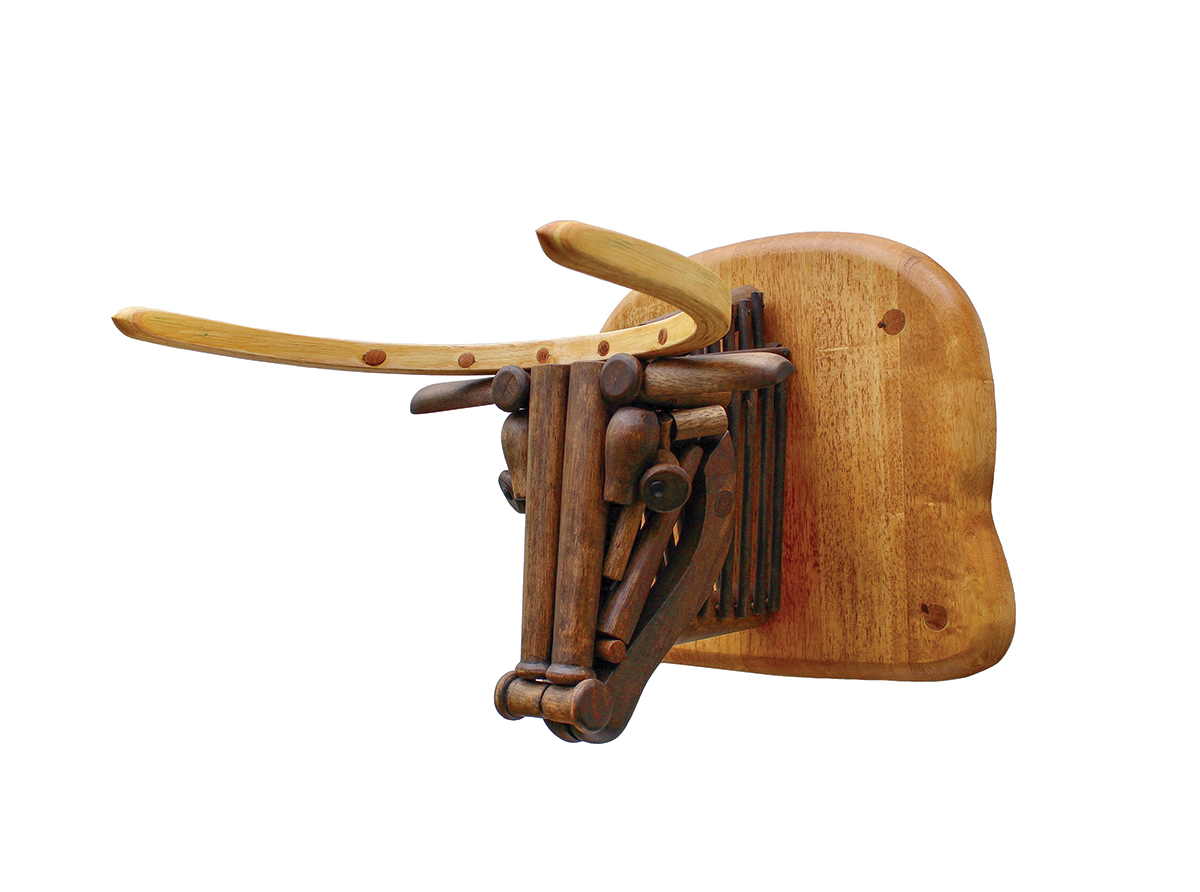Sculptor creates a charming loop of reciprocity

Photo by Colby Rabon
José Pablo Barreda muses: “What if you threw out an old chair and it came back into your life as art [that] you hung on the wall or placed on a table — would you even recognize it?”
His wooden animal sculptures embody that question because he creates them from old chairs discarded on the curb, by the side of the road, or in dumpsters. “Their time as functional furniture ended,” says Barreda, “but then I restore them as art — which changes the whole dynamic.” Someday the sculptures may eventually return to the soil, where a tree could grow, continuing the cycle. As Barreda notes, “Life always finds a way to balance back, and the process is as important as the end result.”
Barreda began the series years ago as a class project while attending the School of the Art Institute of Chicago. “That was before I knew how to work with wood, and I used to make [the sculptures] more like puppets versus stationary pieces, using screws and wire for the joints.” But then, toward the end of college, he answered an ad from a furniture maker looking for an apprentice. “He taught me everything I know,” says Barreda.

Today, in Asheville, Barreda adheres to the “one for one” method of using only the wood from a single chair to create the corresponding singular sculpture — no screws, hinges, or bolts. He first creates a detailed illustration of the chair, painstakingly sands it down to raw wood, and repairs any dings or other damage. Straight chairs are less difficult to sand but more difficult to turn into animal shapes since there are no straight lines in animal anatomy. Ornate chairs are more labor intensive but easier to reassemble into animal forms.

“Normally I chase the curve,” he explains, “so if I’m building a camel, I know it has certain curves that I look for in the chair.” When he made a tortoise sculpture, he had to find a chair with a circle in it to help represent the shell.

If it’s a commissioned piece, the client decides on the animal and Barreda seeks out a chair that will work. Otherwise, the chair inspires the design. “When people see the sculpture, our roles are flipped. Where I looked at the chair and my challenge was to see an animal, now they start trying to see how the sculpture they are looking at could have been a chair.”

He observes that chairs, more than any other piece of furniture, are directly linked to humans. “We interact with them the most. You need a chair to sit at a table.”
The sculptures create a charming loop of reciprocity from artist to audience and back again. “Fundamentally, it’s therapeutic for me and helps me widen my curiosity,” Barreda says. “I get to really explore and gain knowledge about wildlife. The subject matter goes hand-in-hand with the environment and my philosophy of conservation and raising awareness. … I love the series, pour my soul into every one of these pieces, and plan to continue it until I can’t anymore.”
José Pablo Barreda, Asheville, josepablobarreda.com and on Instagram (@chairismatico). Barreda’s work is represented by The Haen Gallery (thehaengallery.com) in Asheville (52 Biltmore Ave.) and in downtown Brevard (210 South Main St.).
